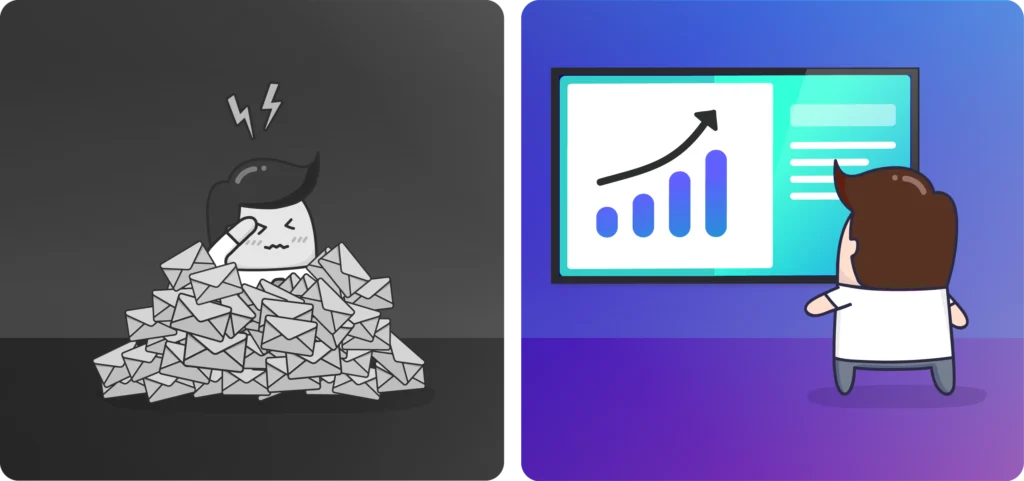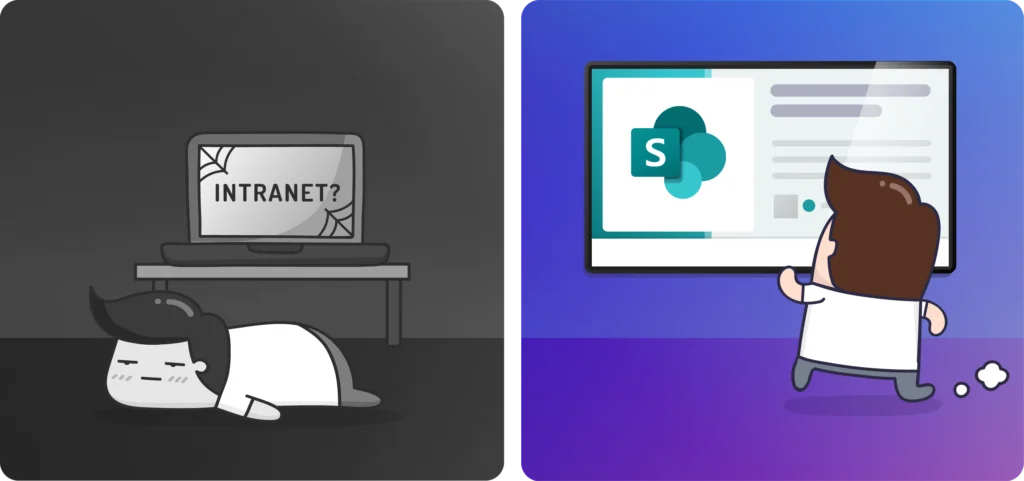Research: 1 in 5 Employees Poorly Informed. Now What?
Estimated reading time: 6 minutes
Important updates go unseen, instructions disappear among dozens of notifications, and employees miss crucial information. Recent research commissioned by Netpresenter among over 1,000 respondents shows that more than 1 in 5 employees feel insufficiently informed. That’s not without risk.
When employees are not well-informed, mistakes, delays, and even safety risks can arise. Think of a missed phishing warning or an updated safety instruction that doesn’t reach the right team. Insufficient information decreases trust and employee engagement, reduces productivity, and puts the performance and safety of the entire organization under pressure. In this article, you’ll discover some important underlying factors and learn how to address them effectively.
32% Experience information overload
Employees today are overwhelmed with information. They continuously receive emails, Teams messages, intranet updates, internal newsletters, and more. On top of that, platforms like WhatsApp and LinkedIn compete for their attention at every opportunity. It’s no wonder that information overload has become a serious challenge in many organizations. In fact, 1 in 3 employees say they receive so much information from internal communication alone that they no longer read everything. This causes important messages to disappear in the flood.
Solution: Increase the impact of your communication by using natural attention moments. With Lock Screens, Wallpapers, Corporate Screensavers, and Digital Signage, you can reach employees exactly when they’re not actively working so your message truly lands without disrupting their tasks. Combine this with targeted messaging based on role, location, or team via desktop, mobile, or TV, ensuring only the right audience is informed in the way they prefer, preventing unnecessary noise. Set priority levels so important information always gets the visibility it needs, whilst less important information gets less attention. Last but not least: use Attention Boosters to repeat messages only for those who haven’t seen them yet, preventing unnecessary repetition for others.

36% Do not check the intranet daily
In many organizations, the intranet is one of the main information sources. However, more than one-third of surveyed employees do not check it daily. In most cases, employees must actively search for information on the intranet themselves. Due to a lack of time, motivation, or even access (especially for non-desk workers) they often end up poorly informed, or not informed at all.
Solution: Actively highlight intranet content, such as SharePoint updates, in places where your target audience will truly see them. Depending on who you want to reach, this could be on TV screens, PCs, or mobile devices. With the SharePoint Connector, you can display headlines in a visually engaging way, allowing employees to visit the full intranet article easily via QR codes and clear call to action buttons.

31% Experience late or unclear communication
Communication must be fast and clear, especially in times of crisis, but also for day-to-day employee communication. Yet, over 31% of employees say communication within their organization is often too late and/or unclear. The use of traditional channels such as e-mail newsletters plays a major role here. This approach means information is not delivered directly, in the right way, and to the right group of employees.
Solution: Make sure important information reaches the right people at the right time in the right format. Push communication tools such as the Desktop Ticker, Alerts, or notifications and pop-ups play a key role in this. In situations where time is limited, for example during an IT breach or another crisis, you can’t rely on employees reading an extensive email when they happen to feel like it. In these cases, you need to actively grab their attention and deliver the message clearly and directly. If you know something important is coming, schedule the message in advance so it appears at exactly the right moment, through the right channels.

71% have to stay up to date on their own
Information should be brought to employees, but in practice, the opposite often happens. Nearly three-quarters of employees say they are responsible to actively gather and keep track of information themselves. Many lack the time, motivation, or resources to continually search for relevant updates, which means they are rarely truly up to date.
Solution: Switch from passive pull communication to active push communication so employees don’t have to search for information, bringing it directly to them at the right time. Choose an omnichannel approach, combining tools like the Desktop Ticker, Alerts, SMS, Employee App, Digital Signage, and the Corporate Screensaver to reach everyone, regardless of location or workplace. Also, schedule messages in advance and start building awareness before action is needed. As deadlines approach, increase the frequency and visibility with Attention Boosters.

13% Miss updates when working from home
Remote work is now a permanent part of most organizations. More than one in eight employees say they miss important updates when working from home. Without informal communication and physical channels like noticeboards or office TV screens, remote workers often rely solely on email, intranet, and Teams. These aren’t always effective at consistently and quickly informing everyone.
Solution: Effectively reach remote workers by delivering information directly to their mobile phones and PCs. With an Employee App, Corporate Screensaver, and Lock Screen, you can inform them quickly, and in a visually engaging way. Remote workers can also respond to messages and polls via the Employee App, improving not only information flow but also engagement.

Time for Change
Many organizations still make the mistake of relying too heavily on traditional communication channels like email and intranet. These tools are becoming less effective because they contribute to (and drown in) information overload, depend on employees’ intrinsic motivation, and often fail to reach non-desk workers. There’s also a lack of variety in communication channels, insufficient use of visual and direct communication, and too little personalization for different target groups.
Sound familiar in your organization? It’s time to make a change. Schedule a free talk with one of our experts and take the first step toward better employee communication today. Curious about our platform? Take a free guided tour here.
